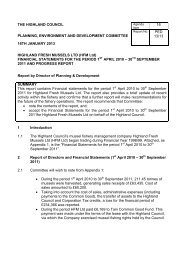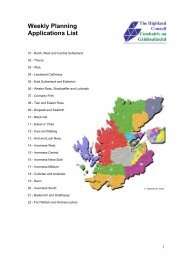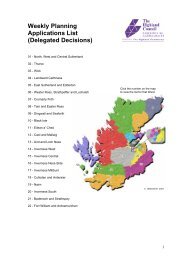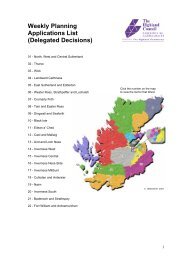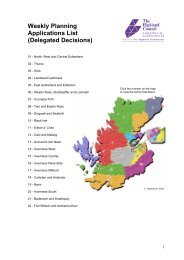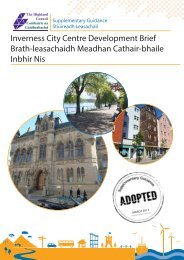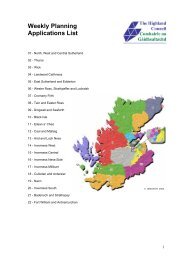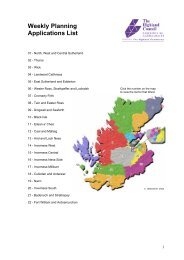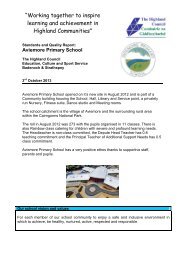Notice of Review 11-00044 Dingwall Highland
Notice of Review 11-00044 Dingwall Highland
Notice of Review 11-00044 Dingwall Highland
You also want an ePaper? Increase the reach of your titles
YUMPU automatically turns print PDFs into web optimized ePapers that Google loves.
Pink-footed Goose is a popular quarry species and it is not surprising that<br />
97% <strong>of</strong> all known causes <strong>of</strong> death are from shooting (Wernham et al 2002)<br />
and is frequently blamed for alleged agricultural damage.<br />
Whilst any mortality associated with this development would be<br />
regrettable, the chances <strong>of</strong> a serious mortality incident occurring is<br />
considered unlikely, and potential losses (if any) would be small, and<br />
would not be significant in terms <strong>of</strong> the overall numbers present and<br />
population size as a whole.<br />
Potential adverse impacts on Pink-footed Goose are therefore assessed as<br />
low.<br />
Greylag Goose Anser anser<br />
UK wintering population 81,900 (birds).<br />
Issues relate to birds over-flying the site area and to collision risk during<br />
both spring and autumn migration periods, and throughout the winter<br />
months. The Cromarty Firth lies within the migration route <strong>of</strong> the<br />
Icelandic race <strong>of</strong> Greylag Geese (breed in Iceland and Greenland) which<br />
overwinter in the UK, and is not only utilised as a staging post during the<br />
migration period, but also an important overwintering site in its own right,<br />
and the numbers are such that a significant proportion <strong>of</strong> the population is<br />
involved. Consequently, the Cromarty Firth has been classified as a SPA,<br />
with Greylag Goose listed as part <strong>of</strong> the qualifying interest (i.e. supports a<br />
population <strong>of</strong> European importance) (see Appendix 1.1). In addition,<br />
populations utilising the Cromarty Firth are considered integral to<br />
populations using Loch Eye (and the Dornoch Firth), NB. Loch Eye lies<br />
between the Dornoch and Cromarty Firths and geese move between here<br />
and the adjacent firths. Like the Cromarty Firth, Loch Eye and the<br />
Dornoch Firth are both classified as SPA (and Greylag Goose is listed as<br />
part <strong>of</strong> the qualifying interest for all three sites). The habits <strong>of</strong> Greylag<br />
Geese are similar to those described for Pink-footed Geese. The spring<br />
migration period extends from late March throughout April, and autumn<br />
migration is from September to early November. Activity involving<br />
overwintering birds remains high throughout the winter months, with large<br />
numbers <strong>of</strong> geese flying out from overnight roost sites to feed in<br />
agricultural fields at dawn and generally returning at dusk, although<br />
movements can continue throughout the day.<br />
Given the location and proximity <strong>of</strong> the site area to the Cromarty Firth, it<br />
is likely that Greylag Geese will over-fly the potential turbine location.<br />
The importance <strong>of</strong> the Cromarty Firth for Greylag Geese has been<br />
highlighted, and significant numbers regularly feed in fields in the<br />
7



